Design Miami/ 2018
The fair distinguished itself with some strong contemporary work – and the largest audiences yet.
5th-9th December 2018
DESIGN MIAMI HAS come a long way from its modest 2005 beginning as a satellite to Art Basel, the main attraction of an event-filled week in Miami Beach each December. The ‘little sister’ is now the undisputed Superbowl of modern and contemporary design; with its original 15 exhibitors grown to a roster of 33 international galleries, it has become a must-see destination for collectors, curators, journalists and design cognoscenti.
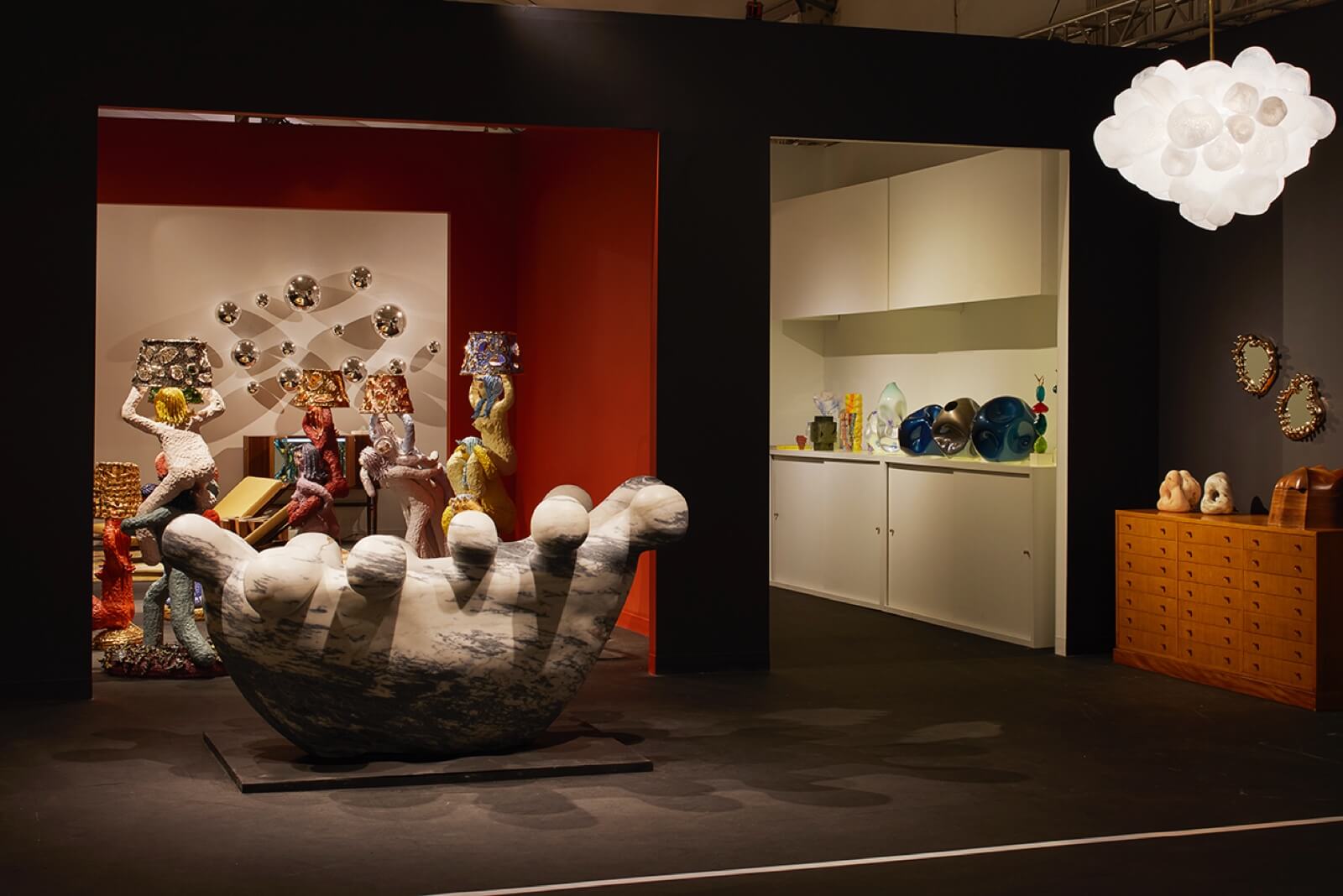
Haas Brothers, ‘Bathy Bates’, 2018
COURTESY: James Harris
The competition for foot-traffic was fierce at the 14th edition of Art Basel, held between December 5th and 9th, with over 200 exhibitors in Art Basel at the Convention Center, and hundreds more in almost 30 satellite shows, museum exhibitions, openings and presentations at venues in Miami Beach and mainland Miami. But design is holding its own as a category for collectors, and visitors shuttled enthusiastically from one site to another, spending freely – from all reports – along the way.
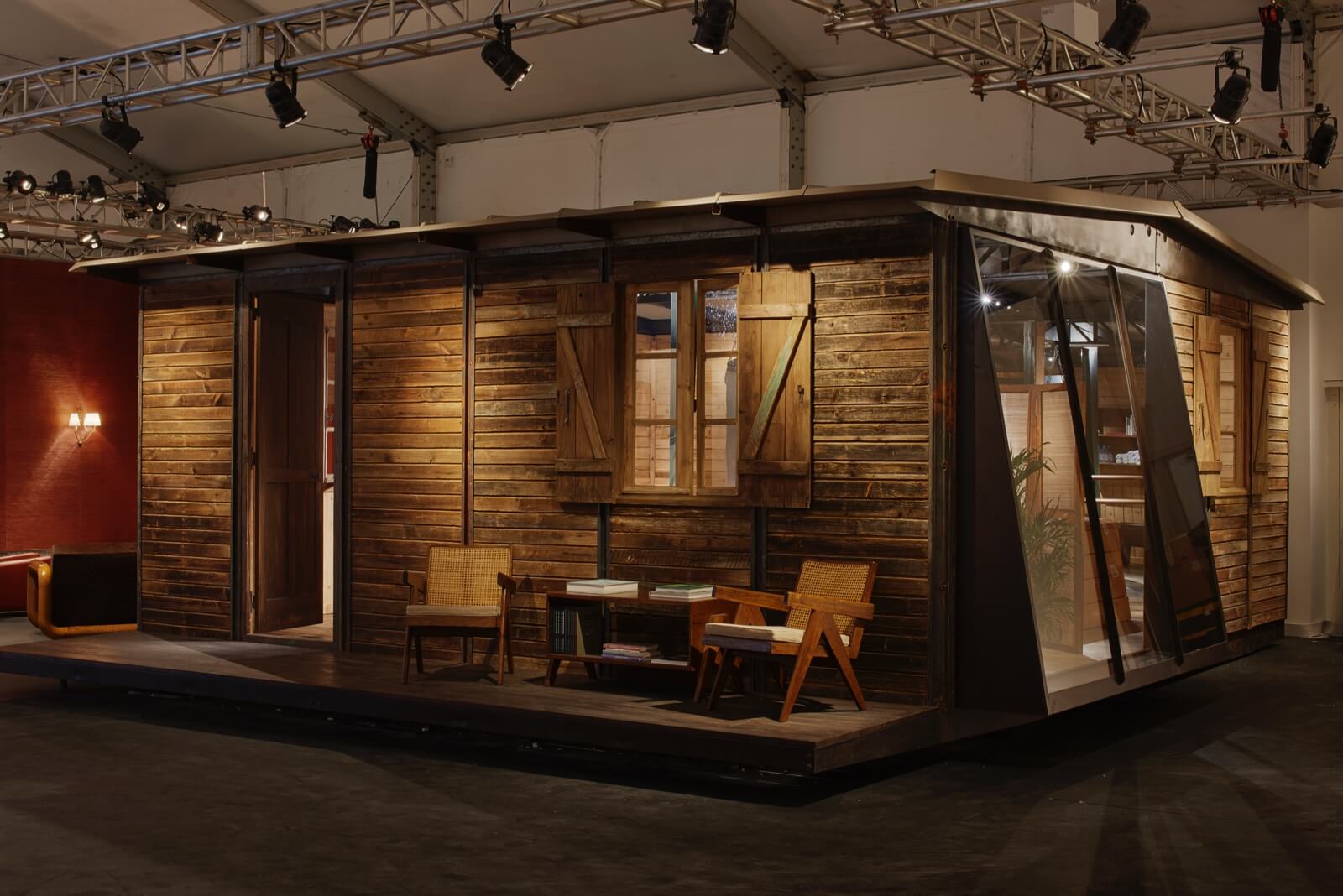
Jean Prouvé, ‘ 6 x 6 Demountable House’, 1944
COURTESY: James Harris
Design Miami 2018 had one of its strongest showings, with attendance estimated at 38,000 and steady crowds throughout the five-day run viewing curated presentations of 20th and 21st century furnishings and decorative objects. Traffic-stopping attractions included: a ‘6×6 Demountable House’ by French architect Jean Prouvé, this one from 1944, (at Galerie Patrick Seguin); a magnificently fantastical 5,000-pound marble bathtub, designed by the hot design-duo of the moment, the twin brothers Nikolai and Simon Haas (at R & Company), with a price tag of $350,000; a six-foot-long hand-carved rocker in the form of a unicorn, created in 1974 by fashion designer Daniel Jackson for his wife (at Moderne Gallery); and a sofa covered with drippings of multicolored foam, by Korean designer Sang Hoon Kim (at Cristina Grajales). On display along with furniture of wood, metal or various types of plastic were pieces using experimental media like industrial waste, flowers, and insect cocoons.
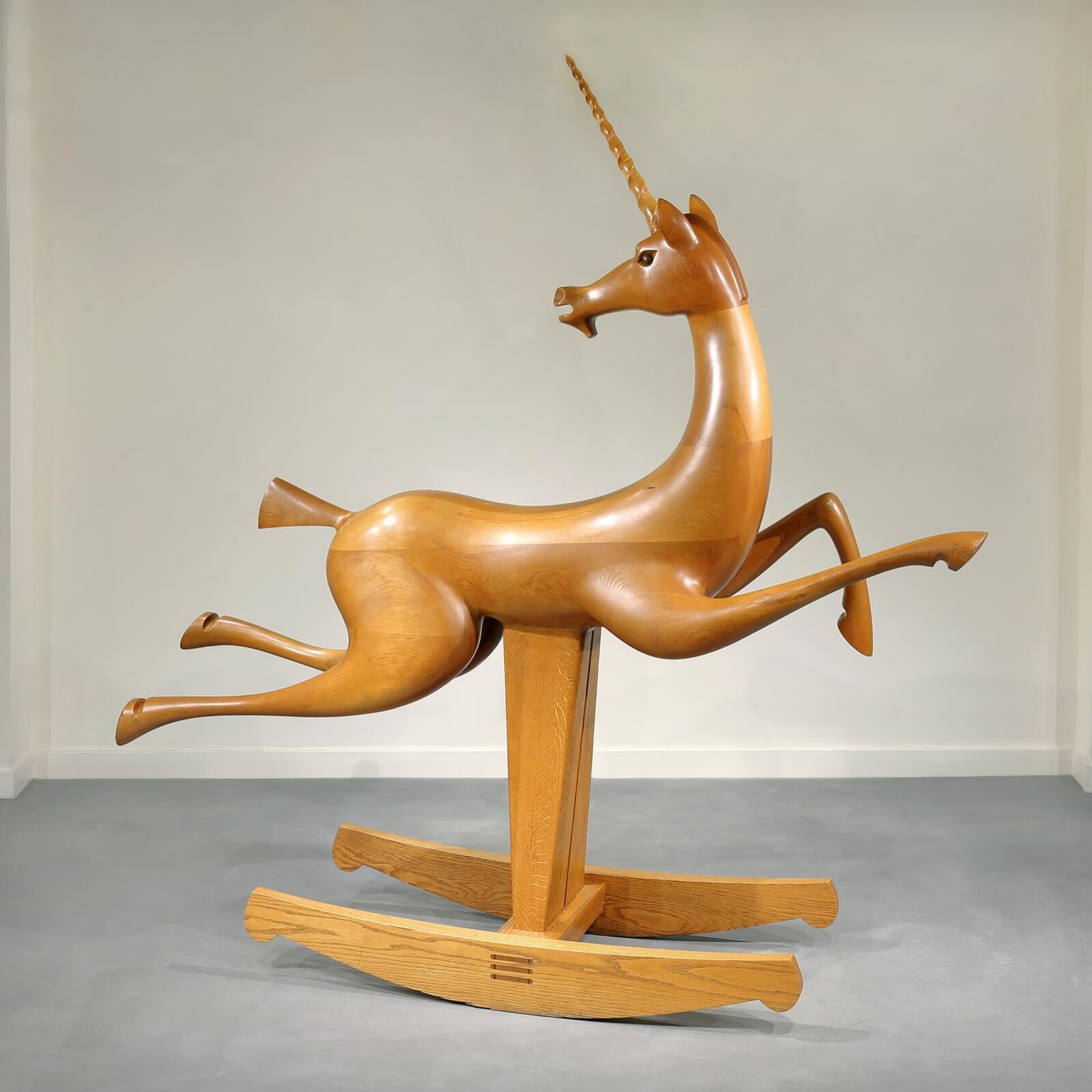
Daniel Jackson, ‘Rocking Unicorn’, 1974
COURTESY: Moderne Gallery
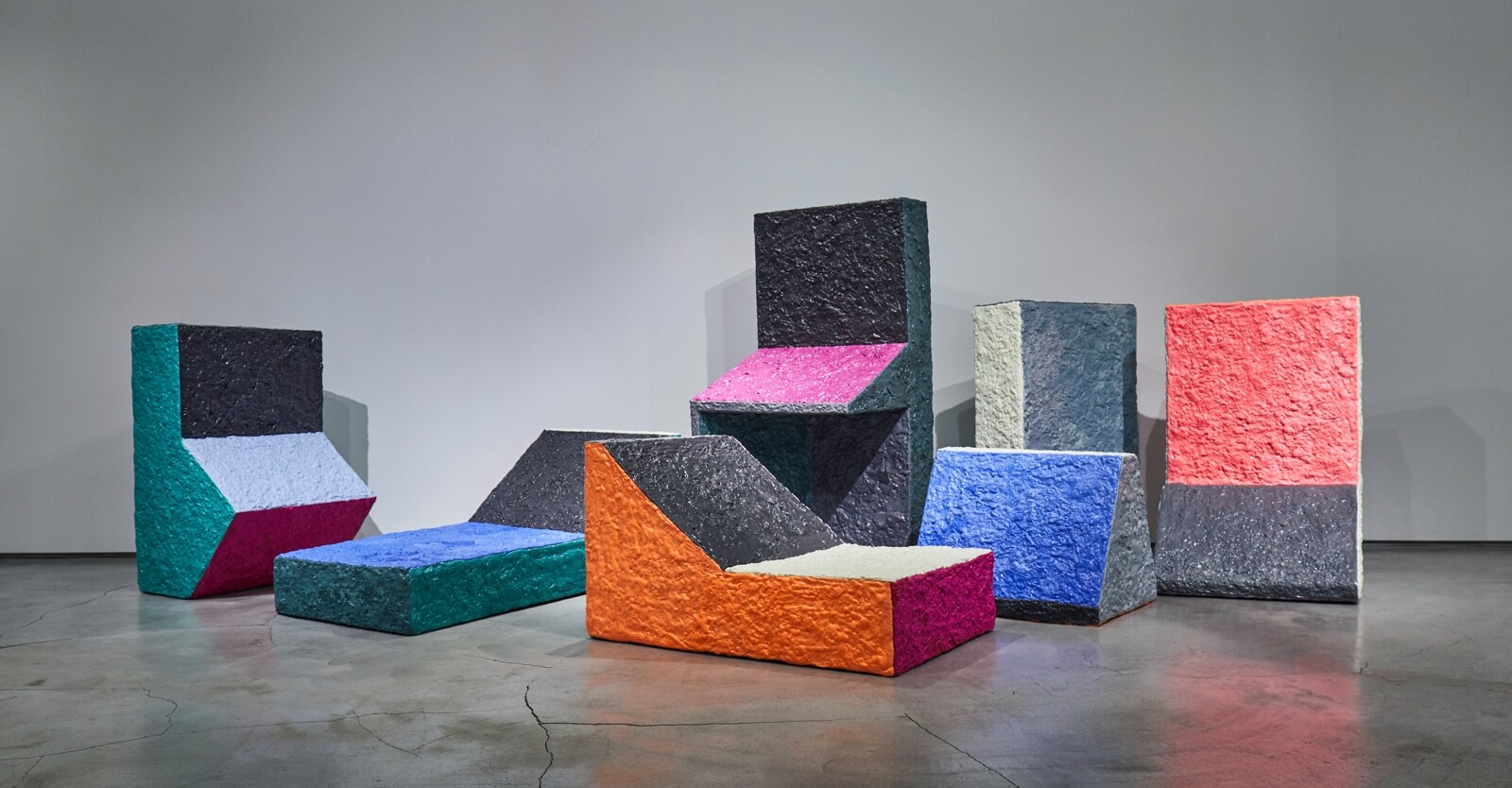
Sang Hoon Kim, ‘Foam Series Sofa Set’, 2018
COURTESY: Cristina Grajales Gallery
Overall, the exhibits skewed towards contemporary work, reflecting both the scarcity of good material in a growing market, and the demand of young collectors for something altogether new. Exceptions to that general rule included classics of the Perriand/Prouve/Jeanneret era and standby Nakashima, but Art Deco and mid-century American design were notable for their virtual absence. Fine ceramics – more than glass – were present, but textiles have largely migrated away from design galleries into the art shows. In all design categories, cost seemed less of a consideration than uniqueness, and six-figure price tags were frequent.
Reported sales were strong across the board, though few dealers disclosed prices. Those who did included: Jason Jacques Gallery, who sold a $250,000 ceramic animal sculpture by Beth Cavener; CONVERSO, where an unusual brass sculpture by Harry Bertoia brought $425,000; and at R & Company, all six of Katie Stout’s female-figure lamps at $45-55,000 sold in the first hour of the show.
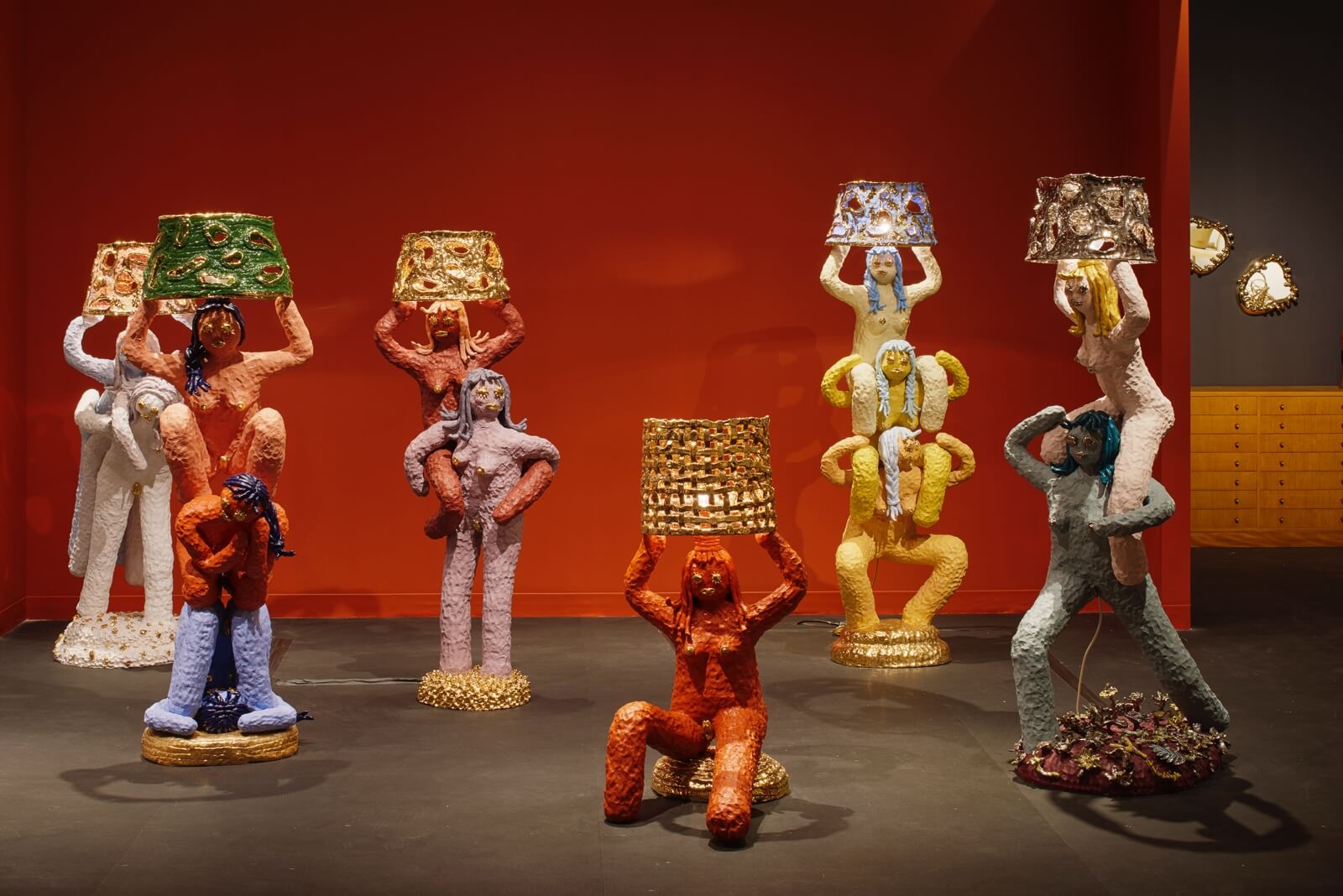
Katie Stout, ‘Female-figure lamps’, 2018
COURTESY: James Harris
EVIDENCE OF THE growing importance of the design market, and Design Miami in particular, was the participation of luxury brands like Louis Vuitton, Fendi, Grand Seiko, Perrier-Jouet and Lexus, who took the opportunity to associate themselves with the show. Vuitton was the only one actually showing products, in the form of limited-edition accessories commissioned from leading designers, but the exposure to affluent collectors generated goodwill, if not actual sales.
Among the exhibitors at Design Miami 2018 were six pioneers from the 2005 premier edition of the fair (originally called Design.05) in the Moore Building, a former furniture factory in what is now Miami’s upscale Design District. Cristina Grajales, Galerie Patrick Seguin, Hostler Burrows, Laffanour-Galerie Downtown, Magen H Gallery, and R & Company were founding galleries in developer Craig Robin’s effort to create a centre for design in what was then a distressed neighbourhood of old warehouses about two miles north of downtown Miami. As the effort succeeded, upscale design and fashion retailers moved in, and Design Miami outgrew the area.

KAWSxCampana collaboration at Friedman Benda, 2018
COURTESY: James Harris
Firmly established as an international fair, Design Miami relocated in 2010 to a custom-built, 72,000 square foot, air-conditioned tent in the Convention Center parking lot, which is being turned into a landscaped park as part of a multi-million-dollar Miami Beach redevelopment project for the area. For the 2019 edition, Design Miami’s tent will be rotated, with a new entrance facing that of Art Basel, reinforcing the sibling relationship and the acknowledgement of Art Basel’s owners, MCH Group, that the separation between design and art is no longer meaningful to collectors, who increasingly buy across categories and periods.
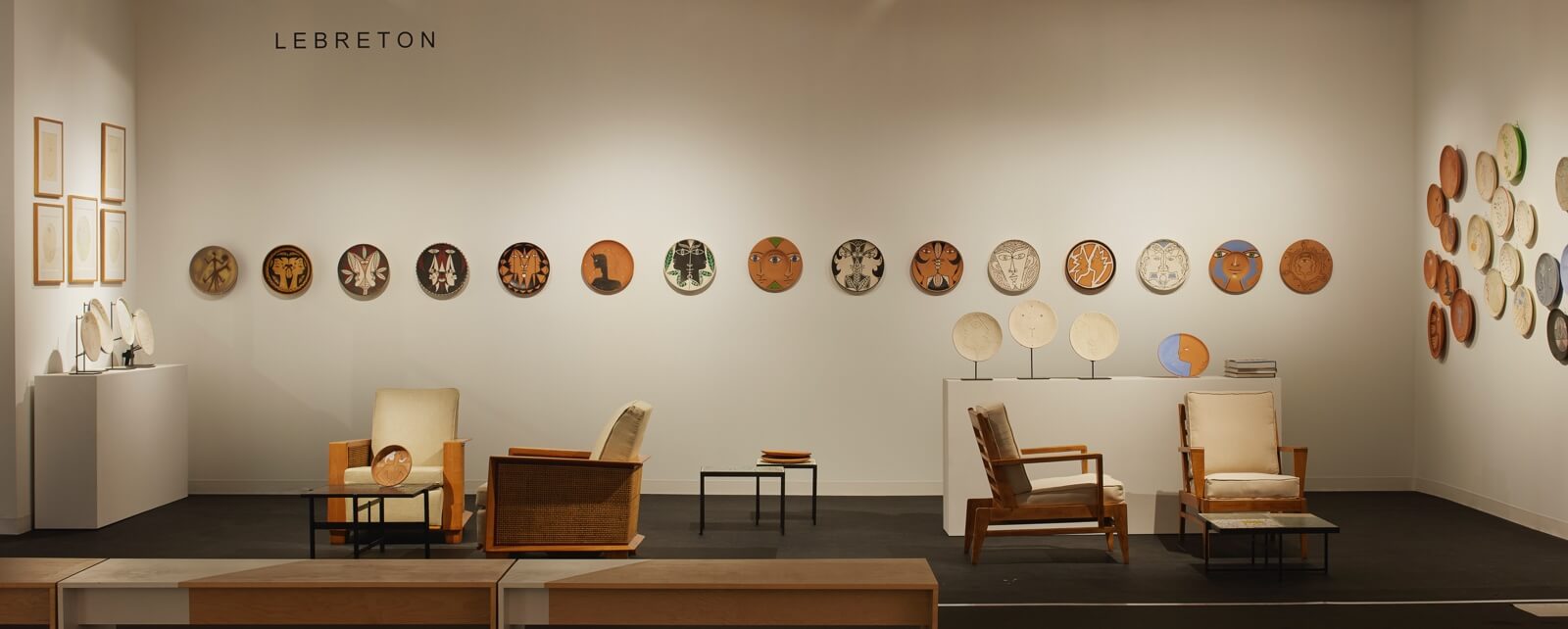
Lebreton Gallery stand at Design Miami 2018
COURTESY: James Harris
Bearing a good deal of the responsibility – and the credit – for making modern design a collectible category, Design Miami now faces the challenge of moving forward. Management has announced plans to expand its scope, with programs, symposia and special exhibitions dealing with current issues, as indicated by the two-year-old tagline “The Forum for Global Design.” Director Jen Roberts believes the new policy of rotating curators (Singapore-based Aric Chen will be the first), will be another way to stay relevant. “A new vision annually can bring in fresh ideas,” she says, noting that Rodman Primack as global ambassador will strengthen the fair’s international relationships. A new website, now under construction, will further expand its reach to the growing community of design collectors.
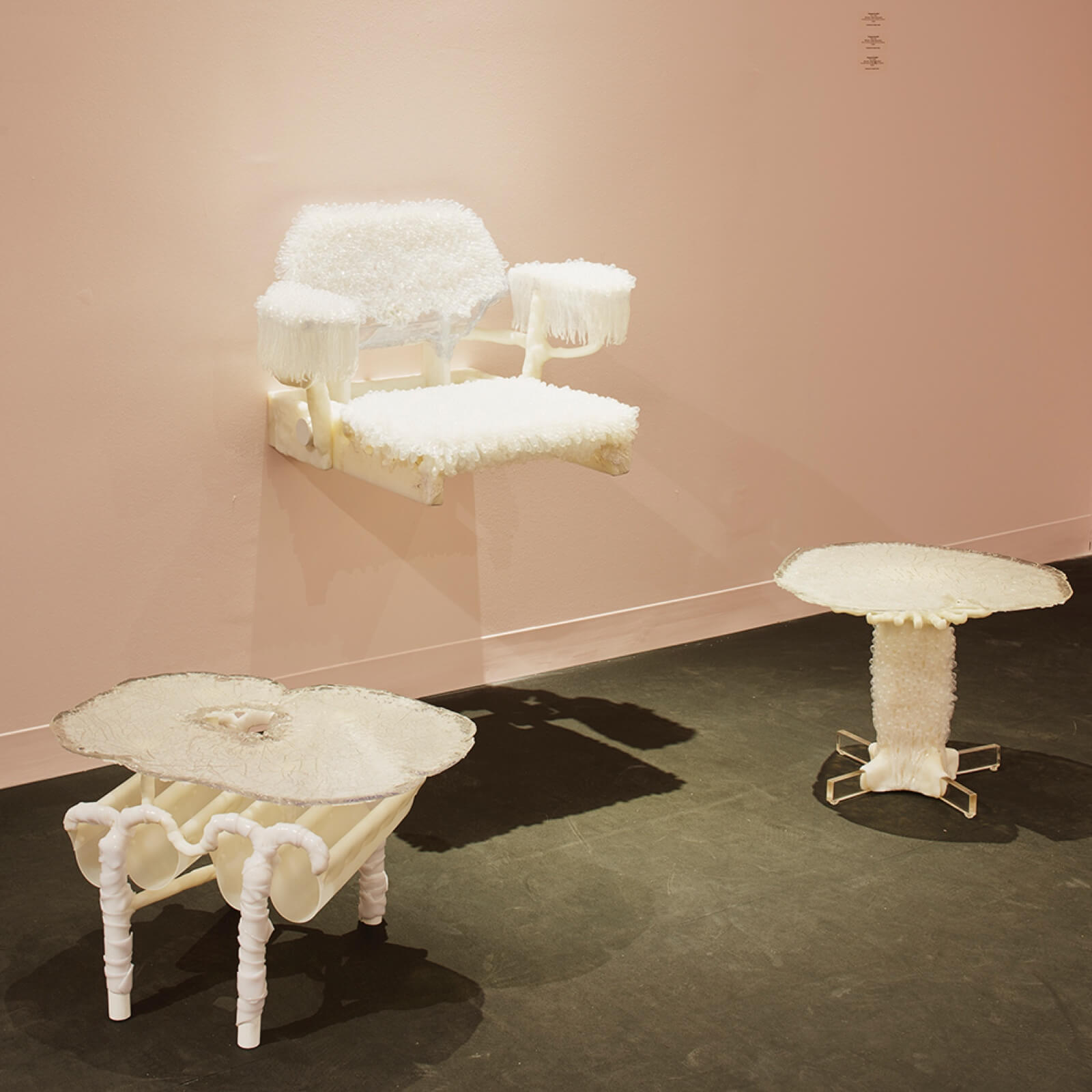
Functional Art Gallery, Design Miami 2018
COURTESY: James Harris
The fair ended on a high note, leaving exhausted visitors, satisfied dealers, a number of lighter purses … and some interesting challenges for the future.
Design Miami/Basel – June 11-16th 2019



